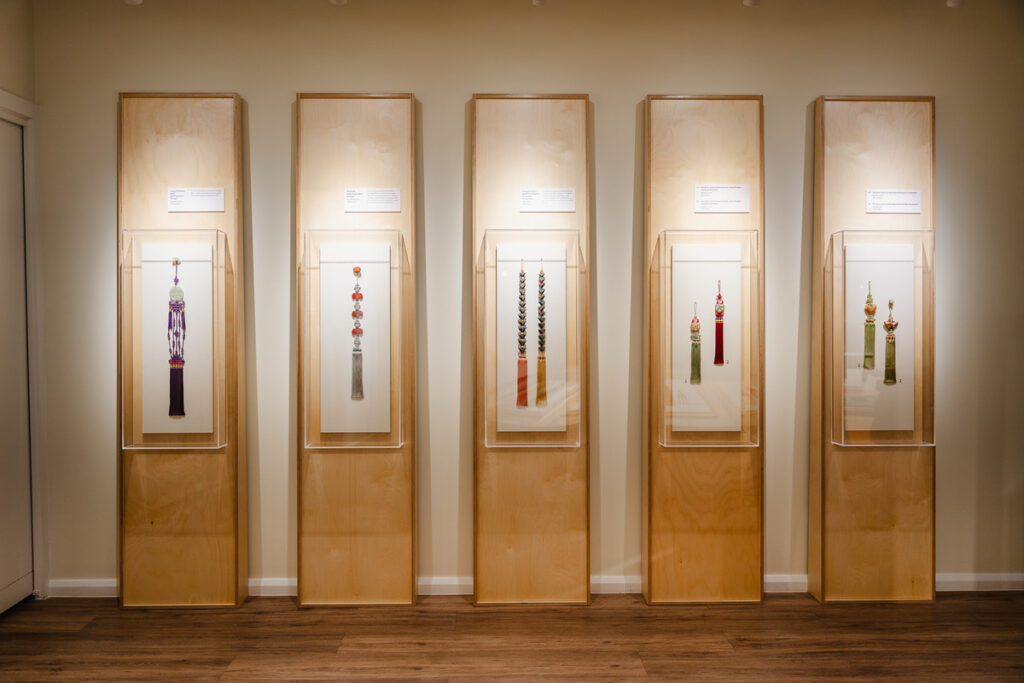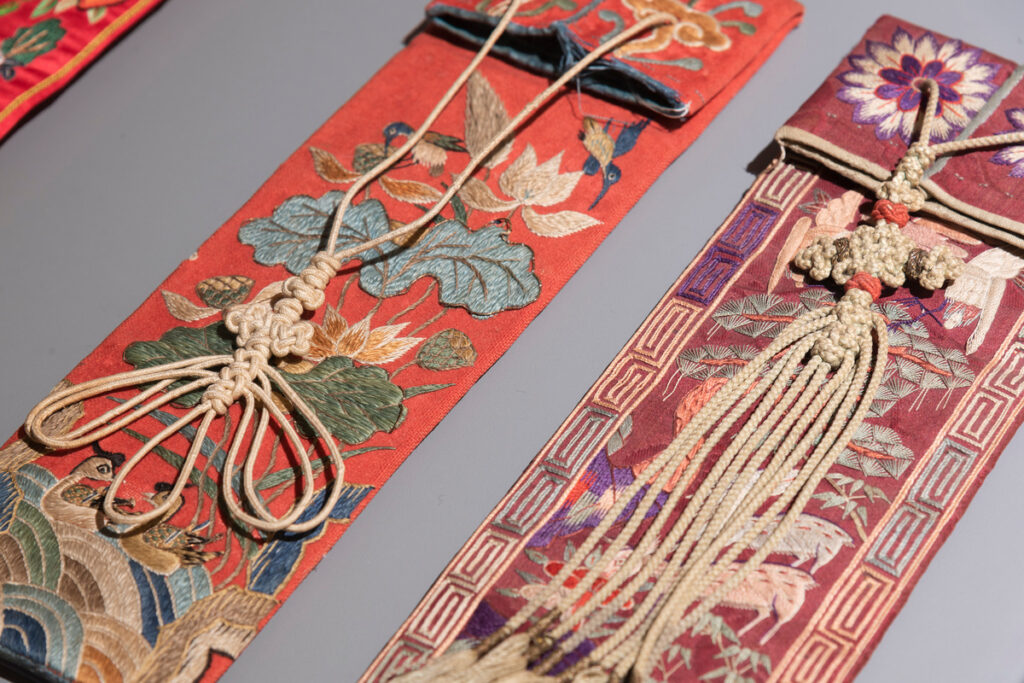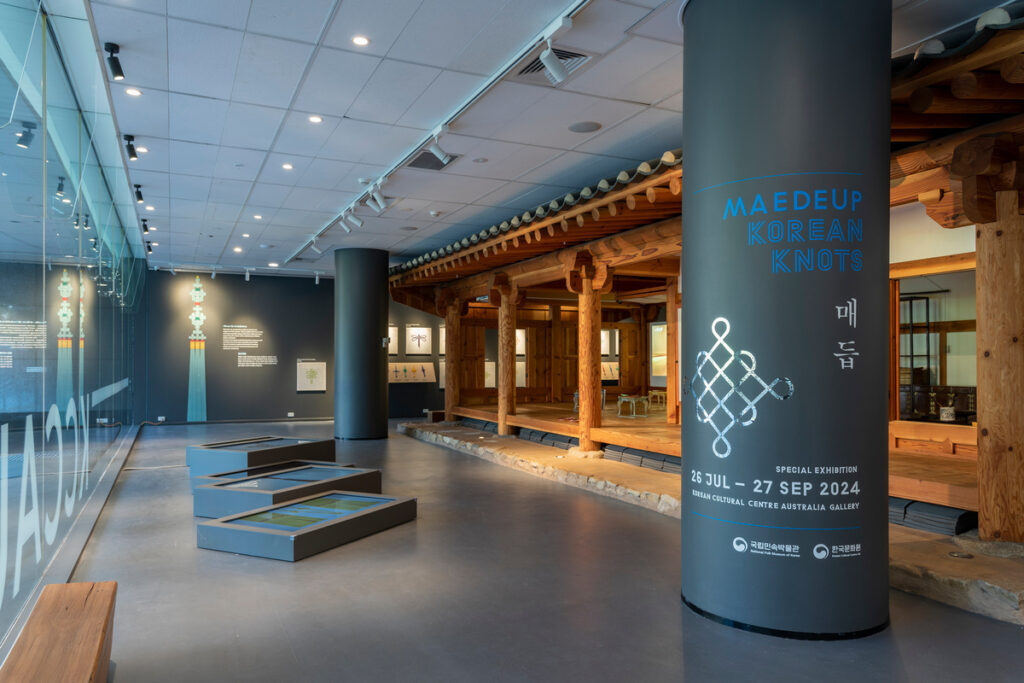A recent exhibition at the Korean Cultural Centre Australia, in collaboration with the National Folk Museum of Korea, displayed the intricate beauty of knots.
Maedeup, Korean Knots highlights the cultural significance of maedeup, showcasing its evolution from practical fastenings to revered art forms. The exhibition features 150 knot artefacts and contemporary works from the museum’s collections, along with an introduction to the history of knots, the people who make them, and their uses. The exhibition also delves into the intricate techniques of master artisans, from the basics of knot construction to the symbolic meanings woven into each design.
Notable artefacts include Embroidered Eared Pouch, Spoon and Chopstick Pouch, and Large Rosary, as well as Pendant with Jade Ornaments.
- Spoon and Chopstick Pouch, 20th Century (Photographer: Garry Trinh)
- Pendant with Jade Butterfly Ornament, 20th Century (Photo courtesy of the National Folk Museum of Korea)
- Exhibition Entry (Photographer: Garry Trinh)
- Hands-on Experience (Photographer: Garry Trinh)
Maedeup are accessories crafted to elevate the elegance of the wearer. These traditional Korean knots of thread resemble nature with their subtle presence, supporting the wearer with a refined touch without being overstated. Koreans have taken materials found in nature to craft maedeup into forms that resemble nature itself.
The term maedeup (traditional Korean knot) refers to both the technique of interlacing threads and the resulting shape. There are practical knots, used to connect or tie things together, and decorative knots, used to decorate something beautifully or imbue positive meaning.
The craft of maedeup in Korea involves twisting threads to create kkeunmok or dahoe (plaited cords), and then weaving and tightening them to form the desired shapes. The maedeup is symmetrical in form, being identical on the left and right, as well as the front and back. A well-crafted maedeup achieves a sense of
the plaited cord, known either as dahoe or kkeunmok. Multiple strands of thread are woven together or interlaced to create the dahoe. The thread has usually been natural silk obtained from silkworms, although in the past a cheaper cotton thread was sometimes used. Today, artificial threads such as nylon are also employed. A series of processes is needed in the production of dahoe from natural silk.
Maedeup primarily served a decorative purpose, being attached to various objects. They were used to embellish clothing and the body through accessories such as norigae (traditional Korean pendant), belts, and gatkkeun (traditional Korean hat strings), as well as everyday items like pouches, fans, and glasses cases. They were also added to musical instruments, swords for military officers, and even formed part of the funeral bier used during rites.
A sul is attached to the end of a maedeup and serves as an essential component that creates harmony. If the maedeup were to be compared to a jeogori (traditional Korean woman’s jacket), then the sul would be the chima (traditional Korean skirt). Sul are broadly divided into those made from kkeunmok and those made by twisting threads. The former category includes the octopus leg-shaped tassel, cord tassel and water drop-shaped tassel, while examples from the latter category include the bar-shaped tassel, strawberry-shaped tassel, and bell-shaped tassel. Other tassel types include those with their ends made of golden paper and those that adorn the large square silk scarf draped from the waistline at the back of the official’s ceremonial attire.







